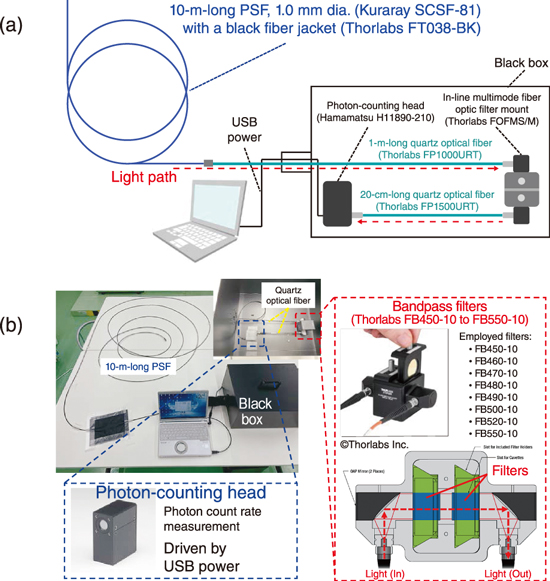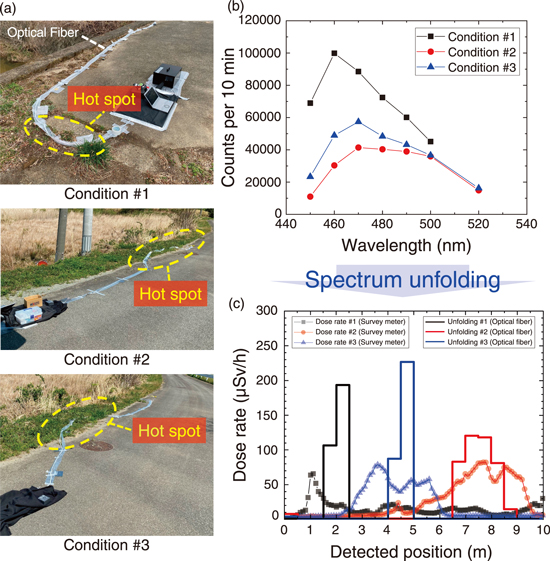
Fig.1-19 Single-end readout-type position-sensitive optical fiber radiation sensor

Fig.1-20 Field experiment at the difficult-to-return zone in Fukushima Prefecture
We are developing a method to measure the distribution of radioactive material using optical fibers to reduce worker exposure in the decommissioning environment of the TEPCO’s Fukushima Daiichi NPS (1F). Optical fibers are used not only as light transmission paths, which is their general usage, but also in many applications where the optical fiber itself is used as a radiation sensor. A typical example is the time-of-flight (TOF) method; this method is used to determine the incident position of radiation to the fiber from the time difference of the light reaching both ends of the fiber. However, for the TOF method, light should be detected at both ends of the fiber; this requirement is unsuitable for applications such as inserting a sensor into a narrow space with a high dose rate. To solve this problem, we developed a single-end readout-type position-sensitive optical fiber radiation sensor in collaboration with Nagoya University and attempted to verify its principle. In this study, we aimed to improve the detection efficiency of the single-end readout-type position-sensitive optical fiber radiation sensor based on a new spectroscopy system to broaden the range of applications.
Fig.1-19 shows the system configuration of the detector. In this detector, the light emitted at the plastic scintillation fiber was transmitted to the photon-counting head (a photomultiplier tube) via bandpass filters and quartz optical fibers, and the photon count rate was measured. Here, the bandpass filters transmitted light only with a specific wavelength. By sequentially replacing the bandpass filters (transmission wavelengths: 450 nm, … , 550 nm), a count rate spectrum reflecting the wavelength dependency of light attenuation in the optical fiber was obtained. This helped realize a highly sensitive single-end readout type optical fiber radiation sensor using the unfolding method (a type of inverse estimation method). Fig.1-20 shows the result of the demonstration test in the outdoor environment of the difficult-to-return zone in Fukushima Prefecture. The hot-spot locations with a maximum surface dose rate of less than 100 μSv/h were roughly detected under three measurement conditions. These results suggest that the detection limit improved remarkably; it was previously several tens of mSv/h. These improvements in the detection limit and demonstration in the outdoor environment are promising results that will lead to the practical application of this sensor in the reactor buildings of the 1F.
This work was partially supported by the JAEA Nuclear Energy S&T and Human Resource Development Project through concentrating wisdom (JPJA19B19206529), “Measurement Methods for the Radioactive Source Distribution Inside Reactor Buildings using a One-dimensional Optical Fiber Radiation Sensor”.
(Yuta Terasaka)